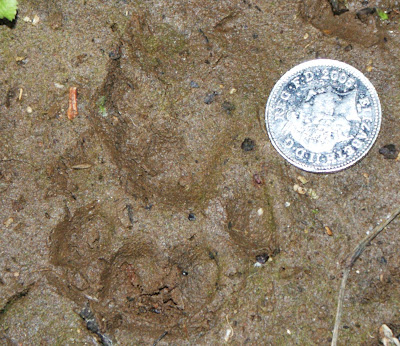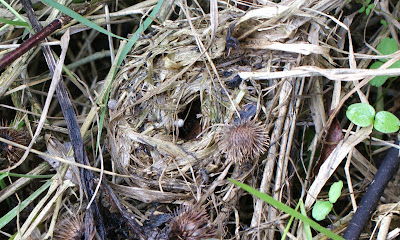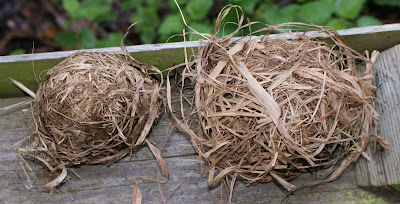
[This photo by permission of
John Pitts]
I can’t believe that it’s been so long since I was last out in the local countryside! At the end of the morning, I took the opportunity to meet up with the Greensand Volunteers who were doing a great job clearing a clogged-up water channel at Flitton Moor. The other reason was to spend an hour or two searching for Harvest Mouse nests.

This Otter print was under the bridge from which the first photo was taken. I reckon that it’s a left fore print. It’s about 6 ½ cm long, with 5 toes – the 1st & 5th toes not being aligned. I think I can just make out a faint webbing mark in the soft mud.

There was also some old spraint on a log under the bridge. Even though it was old, the smell was very fishy.

This dropping was old, too. There was no fishy whiff, but there definitely was a distinct lingering odour – almost certainly Mink.

I’d gone down to the Moor to catch up with the Greensand Volunteers and to do a quick search for Harvest Mouse nests. In the first clump of Common Reed, within 5 minutes of starting the search, I found this nest - unbelievable!!

Then, a hundred metres or so down the footpath in another patch of Common Reed alongside the River Flit I found this old nest close to the ground.

Here are the 2 nests together, which gives you an idea of the difference in size.

On the way home I stopped off and quickly examined the Common Reed in a field alongside the road near the Silsoe turn of the A503. I soon found this interesting ‘nest’ lying on top of some Common Reed alongside in the vicinity of some thistles. The leaves seem to suggest that it has been constructed by a Harvest Mouse, but it consists almost entirely of thistle down, as you can see in this photo of the ‘nest’ broken open:

Is it a Harvest Mouse nest? I need to show it to someone else to confirm that or otherwise.
